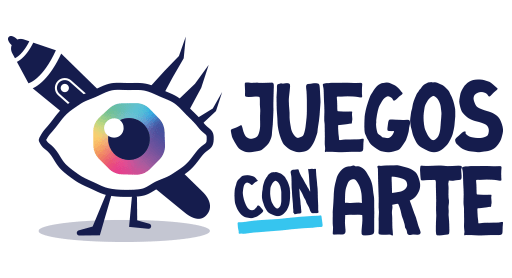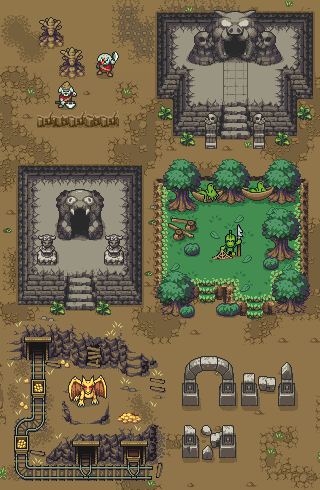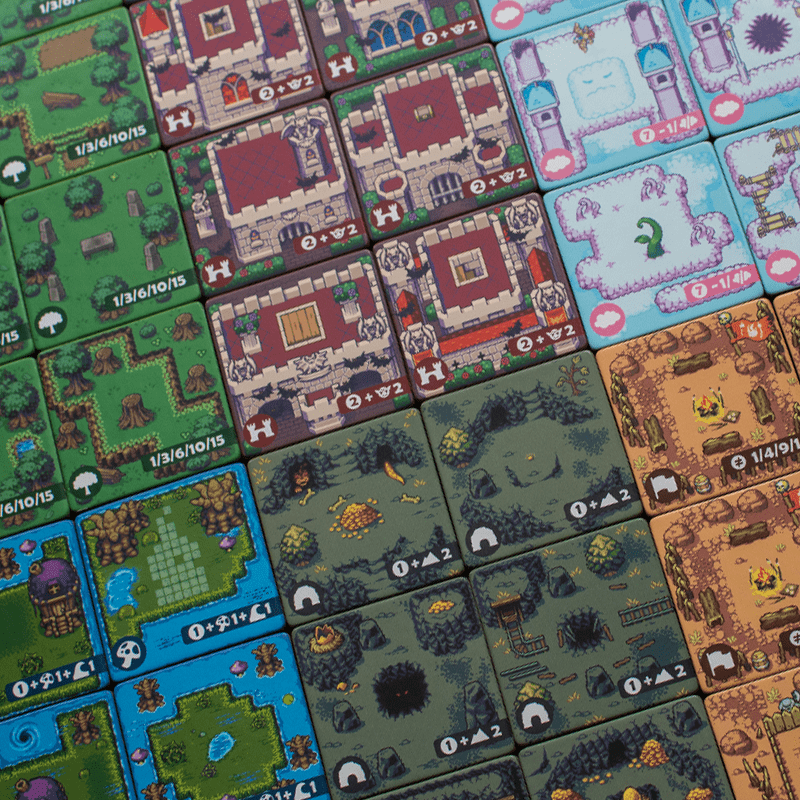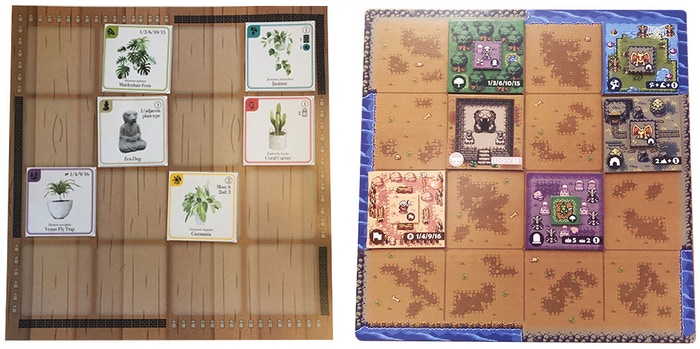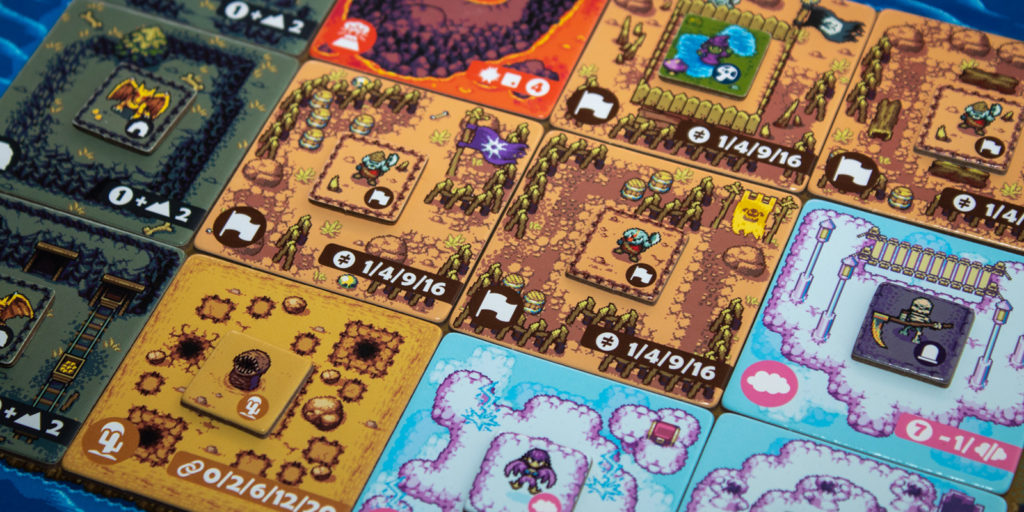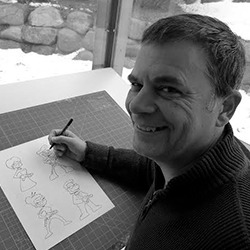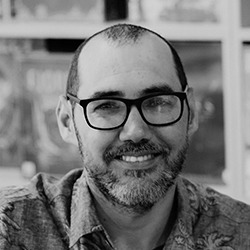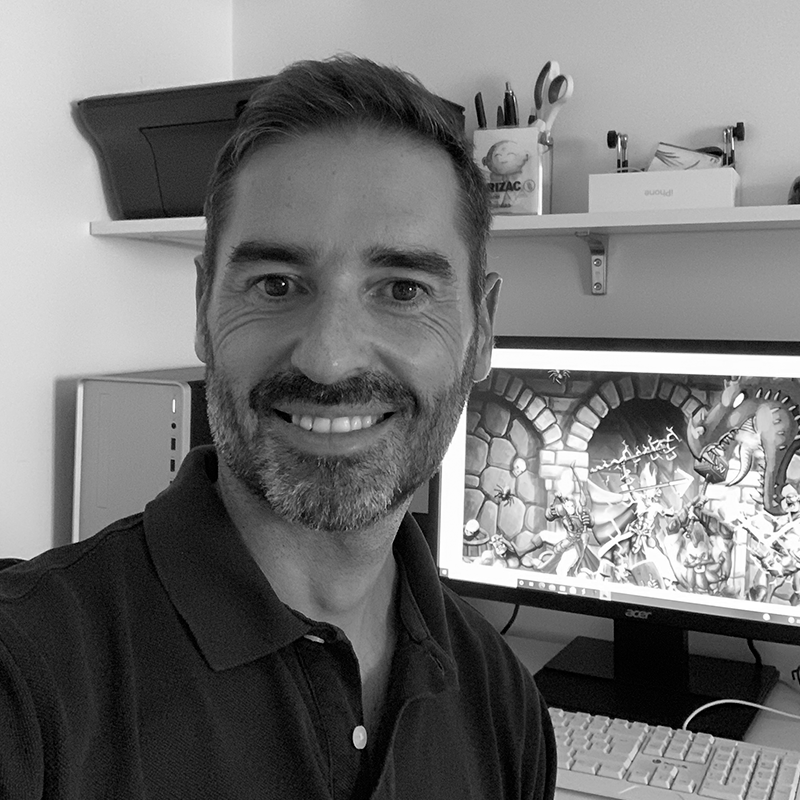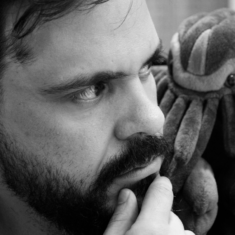
Hemos tenido el placer de hablar con Johnny O’Neal, director artístico y fundador junto a su hermano Chris de la editorial Brotherwise Games. Nos explica cómo se creo la editorial y su trabajo como director artístico. También nos revela cómo Overboss paso de ser un juego de colocar plantas en un invernadero llamado «Solarium» a una continuación de su exitoso juego de mesa Boss Monster.
Esperemos que os guste la entrevista y su experiencia.
ENG | Welcome Johnny, for our followers who don’t know your work yet, could you tell us a bit about your professional background and how Brotherwise Games is formed?
Brotherwise Games started in 2012 with a bet between me and my brother Chris: who could design a board game first? We both made games, and he actually won the bet, but a few days later I showed him the first prototype for Boss Monster. He loved it, and said we should try putting in on Kickstarter. At the time, this was truly just something we were doing for fun. But the Kickstarter took off, and Boss Monster became a best-seller, and years later we’ve both been able to quit our day jobs.
ESP | Bienvenido Johnny, para nuestros lectores que aún no conocen tu trabajo, ¿podrías contarnos un poco sobre tu trayectoria profesional y cómo se formó Brotherwise Games?
Brotherwise Games comenzó en 2012 con una apuesta entre mi hermano Chris y yo: ¿quién podría diseñar un juego de mesa primero? Los dos hacíamos juegos, y de hecho él ganó la apuesta, pero unos días después le mostré el primer prototipo de Boss Monster. Le encantó y dijo que deberíamos intentar ponerlo en Kickstarter. En ese momento, esto era realmente algo que estábamos haciendo por diversión. Pero el Kickstarter despegó, y Boss Monster se convirtió en un best-seller, y años después ambos hemos podido dejar nuestros trabajos.

ENG | What are your duties as art director?
My brother and I both do a bit of everything for the business. He focuses more on publishing, bringing in games from outside designers like Night of the Ninja from Justin Gary. I focus more on internal design, leading initial game design on projects like Call To Adventure and The Dragon Prince: Battlecharged. But I also work as Art Director for most of our games, coming up with a visual style and working with talented artists to commission all the required illustrations.
ESP | ¿Cuáles son sus funciones como director artístico?
Mi hermano y yo hacemos un poco de todo para el negocio. Él se centra más en la publicación, trayendo juegos de diseñadores externos como Night of the Ninja de Justin Gary. Yo me centro más en el diseño interno, dirigiendo el diseño inicial del juego en proyectos como Call To Adventure y The Dragon Prince: Battlecharged. Pero también trabajo como director de arte para la mayoría de nuestros juegos, ideando un estilo visual y trabajando con artistas de talento para encargar todas las ilustraciones necesarias.


Fotografía realizada por Juegos con Arte 
ENG | As art director, you have directed and supervised the art for the board game Overboss, how did the project come about and what were the first steps in its creation?
Overboss came to us from Aaron Mesburne and Kevin Russ (best known for designing Calico). Its original name was «Solarium,» and the theme was about placing plants in an indoor greenhouse. We really liked that concept and our plan was to work with Beth Sobel to create the art. But right around that time, a few gardening themes were scheduled to hit the market. So we looked at new themes, and realized the game’s mechanics fit surprisingly well with the theme of our original hit, Boss Monster. Plant tiles became terrain tiles, pots became monsters, and statues became dungeons. It was a big change, but Aaron and Kevin graciously embraced the new theme.
ESP | Como director artístico, has dirigido y supervisado el arte del juego de mesa Overboss, ¿cómo surgió el proyecto y cuáles fueron los primeros pasos en su creación?
Overboss nos llegó de la mano de Aaron Mesburne y Kevin Russ (más conocidos por diseñar Calico). Su nombre original era «Solarium», y el tema consistía en colocar plantas en un invernadero de interior. Nos gustó mucho ese concepto y nuestro plan era trabajar con Beth Sobel para crear el arte. Pero justo en ese momento, algunos temas de jardinería estaban programados para salir al mercado. Así que buscamos nuevos temas y nos dimos cuenta de que la mecánica del juego encajaba sorprendentemente bien con el tema de nuestro éxito original, Boss Monster. Las fichas de plantas se convirtieron en fichas de terreno, las macetas en monstruos y las estatuas en mazmorras. Fue un gran cambio, pero Aaron y Kevin aceptaron amablemente el nuevo tema.
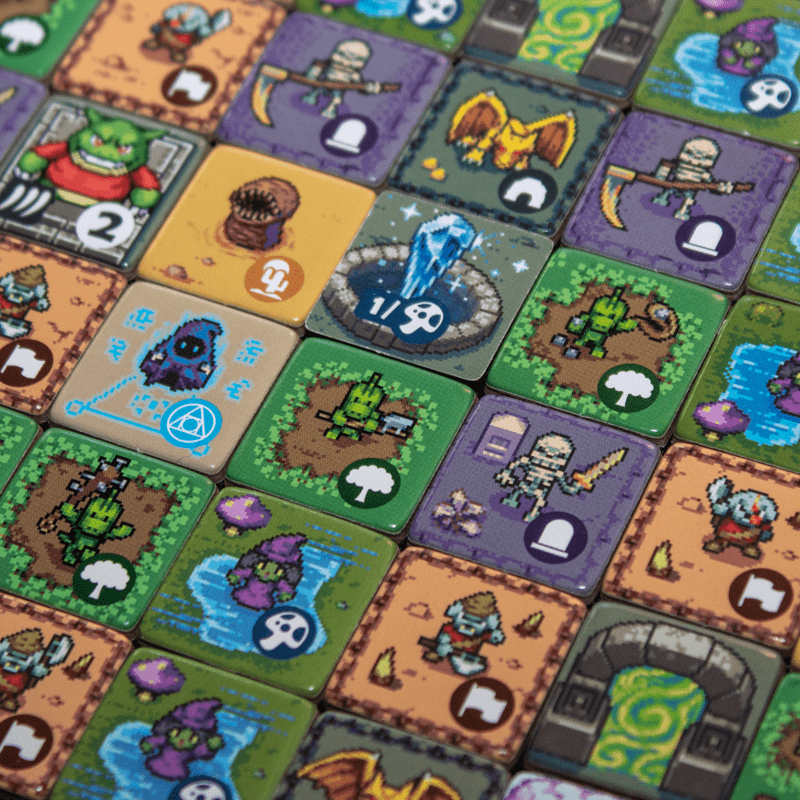
ENG | I know that many art directors use social media to find new artists, how important is social media for your research and what other means do you use to find new illustrators?
With so many board games coming out every month, finding a distinctive aesthetic is really important. I’m constantly browsing Instagram, Artstation, and Reddit to find artists with fresh styles. That’s how we found isometric vector artist Jesse Riggle for Unearth, papercraft artist Ben Charman for Night of the Ninja, and many of our pixel artists for Overboss!
ESP | Sé que muchos directores de arte utilizan las redes sociales para encontrar nuevos artistas, ¿qué importancia tienen las redes sociales para tu búsqueda y qué otros medios utilizas para encontrar nuevos ilustradores?
Con tantos juegos de mesa que salen cada mes, encontrar una estética distintiva es realmente importante. Estoy constantemente navegando por Instagram, Artstation y Reddit para encontrar artistas con estilos nuevos. Así es como encontramos al artista vectorial isométrico Jesse Riggle para Unearth, al artista de papel Ben Charman para Night of the Ninja y a muchos de nuestros artistas de píxeles para Overboss.
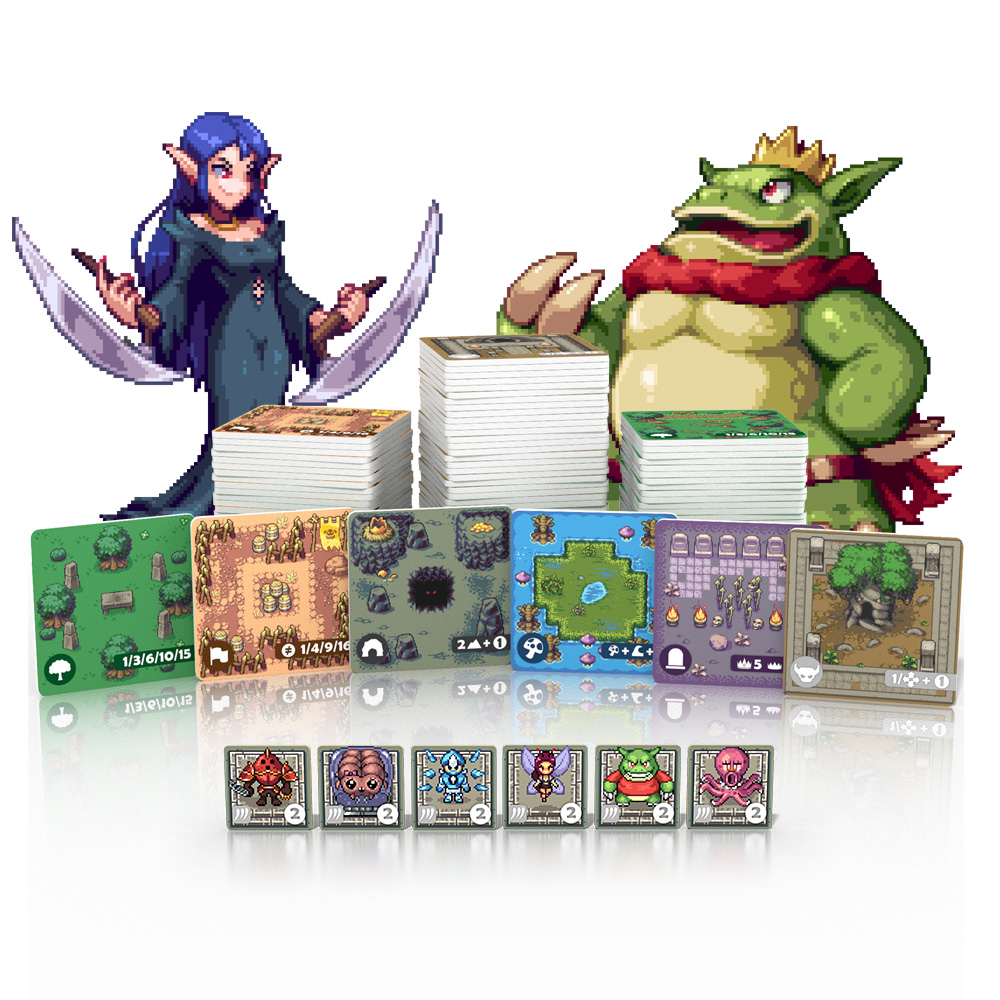
ENG | For the creation of the Arcadia world of Boss Monster how in Overboss you have counted with great illustrators, how was the creative process to create all this world?
A number of board games have used pixel art, but I like to think that Boss Monster and Overboss have been the most successful at capturing the 16-bit look that I grew up with in the early 90’s. We’ve illustrated hundreds of cards for Boss Monster, so I was excited that Overboss gave us the chance to work in a top-down style (inspired by A Link To The Past, Pokemon, Stardew Valley, and many other classics).
Our pixel artists did a great job with that style: Bertrand Dupuy, Raou, and Meisi Olate collaborated to create our terrain tiles, monster tokens, and maps. Dani Oliver and Alberto Hernandez created our awesome new Boss sprites sprites. I think the result is a game that looks better than anything else we’ve done in the world of Boss Monster.
ESP | Para la creación del mundo Arcadia de Boss Monster cómo en Overboss has contado con grandes ilustradores, ¿cómo fue el proceso creativo para crear todo este mundo?
Varios juegos de mesa han utilizado el pixel art, pero me gusta pensar que Boss Monster y Overboss han sido los que más éxito han tenido a la hora de capturar el aspecto de 16 bits con el que crecí a principios de los 90. Hemos ilustrado cientos de cartas para Boss Monster, así que me entusiasmó que Overboss nos diera la oportunidad de trabajar con un estilo top-down (inspirado en A Link To The Past, Pokemon, Stardew Valley y muchos otros clásicos).
Nuestros artistas del píxel hicieron un gran trabajo con ese estilo: Bertrand Dupuy, Raou y Meisi Olate colaboraron en la creación de nuestras fichas de terreno, fichas de monstruos y mapas. Dani Oliver y Alberto Hernández crearon nuestros nuevos e impresionantes sprites de los jefes. Creo que el resultado es un juego que luce mejor que cualquier otro que hayamos hecho en el mundo de Boss Monster.

Fotografía realizada por Juegos con Arte 
Fotografía realizada por Juegos con Arte
ENG | Let’s talk about the importance of colour, where did the colour palette come from and how important is it for the game?
To look authentic and cohesive, pixel art needs to work within a limited palette. In the 80’s and 90’s it was a technical limitation, but we still respect those limits because they make the art look better! We started with a 16-color palette, then expanded to 32 colors as we added more terrain types. There are places where we cheated, but we stayed pretty close! At the same time, we wanted to make sure the game looked colorful and appealing on the table. I think our artists found a great balance.
ESP | Hablemos de la importancia del color, ¿de dónde viene la paleta de colores y qué importancia tiene para el juego?
Para tener un aspecto auténtico y cohesivo, el arte de píxeles tiene que trabajar con una paleta limitada. En los años 80 y 90 era una limitación técnica, pero seguimos respetando esos límites porque hacen que el arte se vea mejor. Empezamos con una paleta de 16 colores, y luego la ampliamos a 32 a medida que añadíamos más tipos de terreno. Hay lugares en los que hicimos trampa, pero nos mantuvimos bastante cerca. Al mismo tiempo, queríamos asegurarnos de que el juego tuviera un aspecto colorido y atractivo en la mesa. Creo que nuestros artistas encontraron un gran equilibrio.
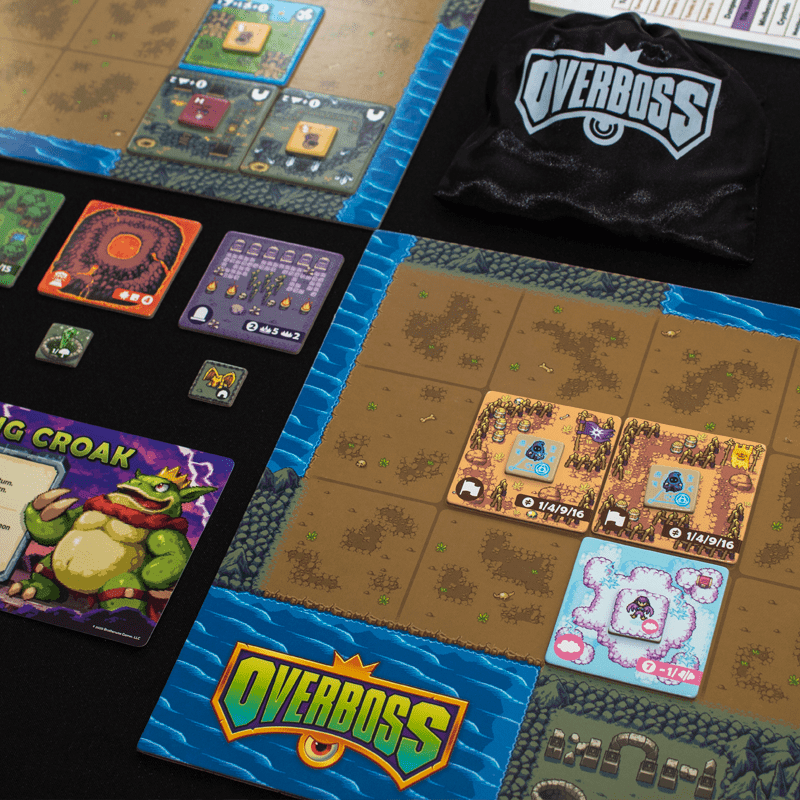
ENG | During the creation of the Overboss board game, what challenges arose and how did you solve them?
When Aaron and Kevin first brought us this game, it was a very focused experience with only one playable set of five terrain tiles. When we made the decision to put it on Kickstarter, we knew we’d need to identify stretch goals: more tile and token types, more game modes, and some kind of card to represent Bosses. This is where I have to give a lot of credit to my brother (Chris O’Neal) and to the game’s lead designer (Aaron Mesburne). They kept finding new ways to expand the experience, while still feeling very connected to the original design. It’s like getting a game and a big-box expansion all at once, and it helped us have a very successful Kickstarter.
ESP | Durante la creación del juego de mesa Overboss, ¿qué retos surgieron y cómo los resolvió?
Cuando Aaron y Kevin nos trajeron por primera vez este juego, se trataba de una experiencia muy centrada, con un único conjunto jugable de cinco fichas de terreno. Cuando tomamos la decisión de ponerlo en Kickstarter, sabíamos que tendríamos que identificar los stretch goals: más tipos de losetas y fichas, más modos de juego y algún tipo de tarjeta para representar a los jefes. Aquí es donde tengo que dar mucho crédito a mi hermano (Chris O’Neal) y al diseñador principal del juego (Aaron Mesburne). No dejaron de encontrar nuevas formas de ampliar la experiencia, sin dejar de sentirse muy conectados con el diseño original. Es como tener un juego y una gran expansión a la vez, y eso nos ayudó a tener un Kickstarter muy exitoso.

ENG | What do you consider necessary to be a good board game illustrator?
My recommendation is to find your style and really push for what you do better than anyone. There are hundreds of artists trying to paint photorealistic, beautifully rendered fantasy art that would look right in a typical Magic: The Gathering set. But there’s only one Seb McKinnon, who brings a truly distinctive style that elevates the game. When I’m commissioning art for a new game, finding someone unique is as important as finding someone talented.
ESP | ¿Qué considera necesario para ser un buen ilustrador de juegos de mesa?
Mi recomendación es que encuentres tu estilo y te esfuerces en lo que haces mejor que nadie. Hay cientos de artistas que intentan pintar un arte de fantasía fotorealista y bellamente representado que quedaría bien en un típico set de Magic: The Gathering. Pero sólo hay un Seb McKinnon, que aporta un estilo realmente distintivo que eleva el juego. Cuando encargo el arte de un nuevo juego, encontrar a alguien único es tan importante como encontrar a alguien con talento.

ENG | Finally, do you have any new project you would like to tell us about?
We’re currently working on a new edition of Call To Adventure! In this game, you’re building a hero and drafting cards to create their backstory. Our visual style is concept art: composition, lighting, and anatomy are important but detailed rendering is not our goal. We want visible brush strokes and a sense of mystery, often with heroes in silhouette or with their backs turned. If any artists reading this have portfolio pieces in this style, send them our way! We’re commissioning over 120 illustrations for the game, and always looking for new artists, so email us a portfolio link at Contact
ESP | Por último, ¿tiene algún nuevo proyecto del que quiera hablarnos?
Estamos trabajando en una nueva edición de Call To Adventure. En este juego, construyes un héroe y seleccionas cartas para crear su historia. Nuestro estilo visual es el arte conceptual: la composición, la iluminación y la anatomía son importantes, pero la representación detallada no es nuestro objetivo. Queremos pinceladas visibles y una sensación de misterio, a menudo con héroes en silueta o de espaldas. Si alguno de los artistas que está leyendo esto tiene un portafolio con este estilo, ¡que nos lo envíe! Estamos encargando más de 120 ilustraciones para el juego, y siempre buscamos nuevos artistas, así que envíanos un enlace con tu portafolio: Contacto
Muchas gracias Johnny O’Neal 😉
Thank you so much for the questions! I feel really lucky to make board games for a living, and it’s always fun to talk about this awesome industry.
(Todas las imágenes cedidas por Johnny O’Neal)

